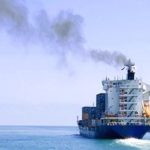Net Zero Emissions Targets Will be a Challenge

The road ahead towards a net zero emissions future is faced with big challenges. In its latest weekly report, shipbroker Gibson said that “last week the IEA published its Net Zero 2050 report, which lays out the steps the world needs to take in order to reach net zero emissions (NZE) by 2050. It is important to stress that the report details a ‘scenario’ and is not a forecast. However, the analysis should not be ignored. Global powers and industry leaders may fail to deliver on the steps required in time, but the trajectory, even if only partially met, will have profound implications for all forms of shipping, whilst creating opportunities for those vessel sectors focused on greener sources of energy”.

Source: Gibson Shipbrokers
According to Gibson, “for the world to achieve NZE by 2050, oil, gas and coal demand must peak this decade. In fact, the report suggests even more drastic action is needed, with oil demand needing to fall from 97mbd in 2022 to 77mbd in 2030, and to 24mbd by 2050. Yet, the near term outlook is that oil demand will continue to grow for at least the next 5 years, reaching around 105.7mbd by 2028 – clearly highlights the disparity between requirement and reality. Indeed, upstream oil and gas investment is still substantial, with new offshore investments in the UK announced this week, whist alternative energy sources like offshore wind have faced ‘headwinds’. Other milestones must be achieved, with EV car sales needing to reach 65% of new car sales by 2030, up from around 14% last year. A rapid fall in oil prices, from $98/bbl in 2022 to $42/bbl in 2030 and finally $25/bbl in 2050 suggests that many long term upstream projects may cease production before the end of their target life. Cheap oil, however, would be met by ever increasing carbon taxes, which rise to $250/tonne of CO2 by 2050 under the scenario”.
Gibson added that “carbon capture, utilisation and storage (CCUS) also forms part of the roadmap, with the technology contributing an 8% reduction in emissions. But for the 2030 target to be reached, all of the announced CCUS projects must be realised on time. But the scale of the challenge and opportunity for shipping is substantial. In 2022, 45mt of CO2 was captured, however this number must rise to over 1 billion tonnes by 2030, and 6 billion by 2050 to deliver its contribution for NZE. Yet, from a shipping perspective, limited yards can build these vessels, whilst uncertainty over design, demand and charter contracts means it will be unlikely that sufficient shipping capacity can support the NZE CCUS requirement”.
“The report also details shipping’s contribution to NZE, with the scenario assuming ammonia emerges as the dominant fuel in shipping, accounting for 6% of energy consumption in 2030 and rising to 44% by 2050. By contrast, the IEA’s scenario only sees methanol accounting for 1% of the energy used by shipping in 2030, and rising to just 30% by 2050, despite the fact that methanol fuelled vessels are already in operation and have a far larger orderbook than that of ammonia fuelled designs. It is assumed that around 15% of shipping energy will still come from fossil sources by 2050 under the outlook”, said the shipbroker.
“Clearly, action by governments and industry are not yet aligned to the NZE 2050 roadmap and appear unlikely to do so in the near term. Sensitivities in the timing and uptake of alternative fuels, energy sources and abatement technologies will be key. Volatility in commodity supply, demand and prices may also increase, as investment moves away from traditional energy sources, perhaps at times out of sync with demand. More policy is needed both at the government and NGO level, however, investment in shipping, both for new forms of energy, existing non energy cargoes and carbon will be a critical success factor behind the energy transition”, Gibson concluded.
Nikos Roussanoglou, Hellenic Shipping News Worldwide

